Making a Case: Jean-Pierre Hagmann
Jean-Pierre Hagmann may not be a household name, but in watchmaking, his reputation resonates like a finely tuned chime. He is known for his expertise in one of the most crucial but often overlooked aspects of watchmaking: case making. This is a feat that is becoming rarer in today’s era of mass production.
Hagmann’s significance in watchmaking is largely tied to his expertise as a case maker, with his creations forming the protective and often decorative outer layer of some of the most distinguished watches ever made. Hagmann is particularly known for producing minute repeater cases for Patek Philippe, among other brands. In this piece we’ll explore who Jean-Pierre Hagmann is, his contributions to horology, the historical context of case making, and why his work is considered so important.
A Brief History of Case Making
In watchmaking, the case plays an important role that goes beyond mere aesthetics. The art of case making has a long and storied history in watchmaking, dating back to the early days of portable timekeeping devices. Originally, a watch case was a simple, functional container made to protect the delicate movement from dust, moisture, and impact. These early cases were typically made from materials like brass or silver and were often unadorned and focused primarily on durability. As horology evolved and watches became more than just functional objects, the role of the case began to transform.
 Hagmann at the Akrivia workshop in Geneva. Image: James K., Hodinkee. First Headline Image for Article: Unekual
Hagmann at the Akrivia workshop in Geneva. Image: James K., Hodinkee. First Headline Image for Article: Unekual
During the 17th and 18th centuries, watch cases evolved into works of art which featured elaborate engravings, enameling, and gemstone settings. At the same time, the use of materials expanded to include gold, platinum, and other precious metals, transforming the watch into a symbol of opulence and a marker of social standing.
Fast-forward to the 19th century: the Industrial Revolution brought significant changes to the production of watch cases. Advances in manufacturing technology allowed for the mass production of cases, making them more accessible to the general public. However, this also meant that the art of handcrafting watch cases began to wane, as machine-made cases became the norm.
Despite the rise of industrialization, there remained a niche market for luxury watches that demanded the highest level of craftsmanship. In this context, the role of the case maker became increasingly specialized, with artisans dedicating their skills to creating bespoke, handcrafted cases for high-end watches. This tradition of case making was carried forward into the 20th century by a few dedicated makers, one of whom was Jean-Pierre Hagmann.
The Master of Traditional Case Making
 Mr. Hagmann’s work bench at AkriviA Atelier in Geneva. Image: Swiss Watches Mag
Mr. Hagmann’s work bench at AkriviA Atelier in Geneva. Image: Swiss Watches Mag
Hagmann began his career in 1957 as a trainee at Ponti Gennari, a jeweler in the Plainpalais district in Geneva whose former premises now house the Patek Philippe Museum. In 1961 he joined Gay Frères, a prestigious jeweler and bracelet maker, as a junior employee in the watch bracelet department. However, his formal entry into case making only began in 1968, when he began to learn his eventual craft through working with case maker Gustave Brera.
Sometime in 1971, Hagmann joined Jean-Pierre Ecoffey, a prominent name in watch bracelets and chains. When Ecoffey acquired the esteemed case maker Georges Croisier (later known as Genevor SA), Hagmann was appointed to lead the watch case division. Rather than pursuing formal watchmaking education, he honed his skills through hands-on experience, driven by a natural instinct and a passion for craftsmanship.
By 1984, leveraging his extensive experience in making cases, he founded his own workshop where he made a significant impact until he sold the business to Vacheron Constantin decades later. He remained with the company for 18 months post-sale to mentor young Vacheron case makers, finally retiring in 2017.
Unlike most mass-produced cases in the market, each of his works is painstakingly crafted by hand, often involving hours of labor to ensure that every curve, angle, and surface is perfect. His cases are not just protective shells but works of art in their own right, often featuring complex engravings, delicate finishings, and other elements that hinted at and added to the beauty of the movements they encased.
Hagmann's approach to watchmaking is firmly grounded in traditional methods. He forgoes modern technology and computers, opting instead to work with hand-drawn designs on paper. As Hagmann puts it, he “may well be the last casemaker in Switzerland capable of handling every detail, from the initial concept and prototyping, to polishing, and finishing.”
In an interview with A Collected Man, Hagmann notes that to him, what makes a good case is a combination of function and beauty, noting that “the cardinal function of a watch case is to offer protection. Then, there are also some obvious aesthetic considerations. You need to learn to balance these, within a very small amount of space.”
Mr. Hagmann (as admirers of his work sometimes refer to him) holds that smaller and lighter cases greatly improve the sound quality of minute repeaters, preferring gold over denser platinum. He particularly prefers rose gold for repeater cases due to its increased stiffness compared to other gold alloys. According to him, a repeater watch case should not exceed 0.5 mm in thickness on either side of the movement, and the crystal should be domed. One of his significant innovations is the recessed track for the repeater slide, which has since become an industry standard. Previously, the slide was mounted directly on the case side and secured internally with a screw, a method Hagmann found prone to occasional instability and misalignment.
 Rexhep Rexhepi Chronomètre Contemporain II, rose gold case by Jean-Pierre Hagmann.
Rexhep Rexhepi Chronomètre Contemporain II, rose gold case by Jean-Pierre Hagmann.
Image: Masharu Wada, Hodinkee JP
One of the key reasons Hagmann's work is so highly regarded is his ability to work with complex, custom designs. Hagmann's watch cases are distinguished by the engraving of his initials — "JHP" — on the interior lug of the cases he makes. Many of the watches he has crafted cases for have been unique pieces or limited editions, requiring a level of customization and precision that few other case makers could achieve. At various times, this has made him the go-to case maker for some of the most prestigious watch houses in the world: Audemars Piguet, Jaeger-LeCoultre, and Gerald Genta, as well as independent watchmakers like Franck Muller, Roger Dubuis, and Svend Andersen. Let’s explore some of his works.
Notable Works
Hagmann is most known for his expertise with minute repeaters, particularly for Patek Philippe. According to Dr. Helmut Crott, a watch expert and close friend of Hagmann, "[h]is cases have more resonance. He allows a bit of space and a special touch for the slide and gongs, which results in a distinctive sound. The sound of a Hagmann case in a minute repeater is notably different from those in standard production models from the company."
Patek Philippe 3974
 A unique 3974 dial configuration with a JPH case. Image: Phillips
A unique 3974 dial configuration with a JPH case. Image: Phillips
One of Hagmann's most famous works is the case for the Patek Philippe reference 3974, a minute repeater with a perpetual calendar. This complication is among the most esteemed in watchmaking. The 3974 was introduced in 1989 to commemorate Patek Philippe's 150th anniversary.
The case of the 3974 is a masterpiece in itself. Minute repeaters are particularly challenging for case makers because the case must not only protect the movement but also amplify the sound quality of the chimes. The thickness of the metal, the internal geometry, and the choice of materials all play a role in the sound performance of the watch. Hagmann's expertise ensured that the 3974’s case was not only visually stunning but also optimized for the best possible sound quality.
An interesting detail about the 3974 is that its chime has a strikingly fast rhythm compared to modern repeaters, which adds to its distinct auditory appeal. This watch was also released under Philippe Stern's leadership, so it makes sense that it seamlessly fits within the collection of its era, emphasizing the brand's design philosophy and the craftsmanship standards of the time.
Patek Philippe 3979
 Image: The Keystone
Image: The Keystone
Another piece created for Patek Philippe's 150th anniversary is the reference 3979. This model was produced from 1989 to 2002, with fewer than 100 pieces believed to have been made, most commonly in yellow gold. Later versions of the 3979 were made by a different case maker, making the earlier Hagmann pieces especially valuable for bearing the coveted maker's mark. The minute repeater is operated via a slider located on the case at 9 o'clock, and the initials 'JHP' are stamped on the inside of the solid casebacks.
This reference was made with both open and solid casebacks, offering the wearer a degree of versatility. The open caseback reveals the caliber R27 PS movement, featuring a stylized Calatrava Cross and two hammers that produce the chimes for the hours and minutes.
Patek Philippe Platinum 3448
 Image: Phillips
Image: Phillips
Introduced in 1962, the reference 3448 was a groundbreaking innovation as the world's first self-winding perpetual calendar wristwatch. It’s sometimes nicknamed Disco Volante, or the “Padellone” by Italian collectors, due to its futuristic case shape. This reference is known for its oversized 37.5 mm diameter case and is characterized by its clean, angular lines and balanced dial design featuring small apertures at the top for the day and month, with a date indicator positioned at 6 o'clock and a moon phase display integrated into a cut-out.
Somewhere around 600 examples of the 3448 produced, though the specifics are hazy. The majority were made in yellow gold (approx. 500), with a small number made in white gold (approx. 100-150), and two known instances made in rose gold. Only two were ever cased in platinum; one of them belongs to Jean-Claude Biver.
In 1981, Patek Philippe discontinued the 3448 and introduced the similar reference 3450, which featured a leap year indication. However, in the 1990s, a notable request came to the company from an owner of a white gold 3448 who wished to have his watch recased in platinum. Given his close relationship with the Stern family, Patek Philippe honored the request. However, since the 3448 had been discontinued for over a decade, Patek Philippe had to find an alternative solution. They chose to turn to Hagmann to create a new platinum case for the watch.
In 1997, Philippe Stern authorized the assembly of two 3448s in platinum cases. These cases were crafted using movements that had been originally cased in the 1960s. On top of that, the owner opted to replace the original dial, which had suffered from humidity while the watch was in Southeast Asia, with a new old-stock (NOS) dial that was period-correct. This decision allowed for the creation of two unique 3448s in platinum, a metal that was not part of the model's original production run.
Patek Philippe Star Caliber 2000
 Image: Unknown
Image: Unknown
The Patek Philippe Star Caliber, unveiled in 2000, is a beautifully made grand complication pocket watch created to commemorate the new millennium. It features 21 complications and represents eight years of research and development by Patek Philippe leading up to its release. Six of its features are patented innovations, and it remains the only pocket watch capable of perfectly replicating the Westminster chimes of London’s very recognizable clock tower.
Its "running" equation of time, which works in tandem with the perpetual calendar, allows for the display of both local mean time and true solar time. Additionally, it includes indicators for sunrise and sunset, a celestial chart, and moon phases, all synchronized with the perpetual calendar. This calendar features a rapid correction mechanism that adjusts all indications to the correct date.
One of the major challenges in creating the Star Caliber case was its size. The original design was too bulky, resulting in a case that was excessively heavy and didn’t complement the chiming mechanism properly. A key part of the solution involved incorporating open-worked covers on both sides of the case, reducing its weight and allowing more space for the chimes to operate without hindrance.
Hagmann considers the Star Caliber case to be one of the most complex he has ever created, and among the most challenging cases ever made in Switzerland. He notes that the Star Caliber case was significantly more complicated than the Caliber 89, and takes great pride in the fact that he delivered 26 cases for the Star Caliber 2000 — a process that took six weeks — of which only a single one was returned by Patek Philippe for adjustments.
Blancpain 5335 Minute Repeating Perpetual Calendar
 Platinum 5335 on Bracelet. Image: Watch Brothers London
Platinum 5335 on Bracelet. Image: Watch Brothers London
Under the new ownership of Jean-Claude Biver and Jacques Piguet, Blancpain went through a revival, designing and launching a number of models including the Villeret line that helped redefine the brand’s identity. Within the line, the reference 5335 stands out for a few reasons.
The 5335 is a masterclass in understated complexity. Its dial design is clean and classic, featuring a three-register layout with a moon phase at 6 o’clock, reminiscent of the perpetual calendar reference 5395. All of this is contained within a compact 34mm diameter case, measuring just 10.2mm in thickness. However, subtle distinctions set it apart from simpler offerings. Notably, where one might expect to see the word "Automatic" beneath the Blancpain logo, it instead reads "Répetition Minutes," providing a subtle glimpse of the minute repeater complication housed inside.
This minimalist design makes it easy for the reference 5335 to be mistaken for a perpetual calendar at a glance, despite its far greater complexity. A key detail is the absence of the leap year indicator on the subdial at 12 o’clock, which preserves the dial's symmetry. Moreover, the usage of feuille hands in the reference 5335 differentiates it from its perpetual calendar counterpart.
Though exact production numbers remain unknown, case numbers for the yellow gold version have been observed up to approximately 60, while numbers in the thirties have been seen in the rarer platinum case version. The relative complexity of working with platinum is well documented, with Hagmann admitting that "[p]latinum cases require a quarter more work than the same in gold."
Pre-Brand ‘Franck’ Perpetual Calendar, World Time, and Minute Repeater (No. 1)
 A Pre-Brand Franck Geneve Monopusher World Time. Image: A Collected Man
A Pre-Brand Franck Geneve Monopusher World Time. Image: A Collected Man
This perpetual calendar and minute repeater chronograph, dating back to Franck Muller's pre-brand era, was part of Sotheby’s Spring Auctions earlier this year. It features a silvered dial and a manually wound, jeweled caliber, all elegantly enclosed in a 37.5 mm 18k yellow gold case with a snap-on back. Distinctively, the watch is marked with its unique case number, ‘No.1’. But a more detailed look shows that the dial is simply signed 'Franck, Genève’. This signifies that the watch is an early one-of-a-kind piece by Muller, assembled sometime in 1992.
This early work is proof of his brilliance from back when he was more of a horological enigma, before his name became synonymous with bold, flamboyant designs. The No. 1, feels more like an ode to classical watchmaking, before the curved tonneau cases and Crazy Hour numerals defined his later collections. Hagmann’s involvement in this makes it even more interesting: he has confirmed with Sotheby’s that he did indeed make the case of the No. 1 minute repeater for Muller.
Among his notable works for Franck Muller, Hagmann also made the case for the first-ever wristwatch tourbillon and designed the original Cintrée Curvex, the distinctive tonneau case now emblematic of Muller’s work.
Omega Chronomètre à Tourbillon
 Image: Antiquorum
Image: Antiquorum
During his time as a virtually unknown 29-year-old watchmaker in the 1980s, Muller acquired one of the rare Omega 30 I tourbillon movements, while independently restoring watches for Patek Philippe.
The outcome was a one-of-a-kind Omega Tourbillon Chronometer. In his spare time, Muller thoroughly refurbished and decorated the movement. He commissioned a guilloché dial from Tille in Geneva and, in a particularly impressive move, ordered a custom 39.5mm 18K yellow gold case with a step bezel and sapphire see-through back, made by Hagmann.
Recent discovery from the Omega archives indicates that in the 1980s, Franck Muller himself owned No. 10 ’595’ 941 and finished the movement. It was sold at the 2021 Antiquorum Auction for CHF 512,500.
Omega produced only twelve of these chronometers, all exclusively for Observatory precision contests. These were crafted by Jean-Pierre Matthey-Claudet based on designs by Marcel Vuilleumier, the director of the Vallée de Joux ‘Ecole d’Horlogerie’. Regulated by Alfred Jaccard, the chief regulator at Omega’s Biel factory, these watches achieved exceptional results in competitions held between 1947 and 1952 in Kew Teddington (London), Neuchatel, and Geneva. One of these pieces (No. 10 '595' 933) scored 867.7 points in the 1950 Geneva Observatory contest, marking the highest score ever attained for a single wristwatch up to that point.
In 1987, seven of these chronometers underwent a complete overhaul. Their movements were reworked, rhodium-plated, anglage-polished, decorated with ‘Côtes de Genève’, and encased in 18K gold or silver cases with transparent backs and push-buttons for time-setting, protected by an olivette.
Anonymous Minute Repeating Chronograph
 Image: Phillips
Image: Phillips
In 1991, a collector approached Hagmann's Geneva workshop with a unique request: he wanted to create a custom watch that combined both a chronograph and a minute repeater. Auction house Phillips explains that Journe provided the module to Hagmann, who then crafted the case for this commissioned watch. The details become fuzzy from here: it’s unclear who assembled the watch, but it’s known that the watchmaker attached the Journe module to a Valjoux 7750 movement and placed it into Hagmann’s case, with the dial unsigned.
As the watch lacks association with a specific brand or watchmaker, it is listed as ‘Anonymous’ in auction catalog terminology, which means ‘unsigned’. While the watch could initially be overlooked, it has a surprisingly intriguing story and a remarkably complex movement.
Journe's module is positioned between the dial and the mainplate, which hides the striking hammers when viewed through the display back. At the time, options for chronograph movements to accommodate such a module were limited, so the caseback reveals what appears to be a relatively simply finished Valjoux 7750. Unfortunately, while Hagmann recalls working on the project, he can't remember specifics about the dial or movement beyond the connection with Journe, leaving the watch with an element of mystery.
Andersen Genève, 1995 Minute Repeater Pièce Unique
 Image: Mr Watchley
Image: Mr Watchley
The final minute repeater we’ll discuss is especially singular. It’s made from 18k rose gold, and features a case with very nuanced details. Although the bezel lacks a stepped design, its rounded appearance is emphasized by two concentric circles along its edge. The case, with its 38mm diameter, gracefully extends into a pair of straight lugs, reminiscent of the above Patek Philippe 3448 and the modern Rexhep Rexhepi Chronomètre Contemporain II.
It features a silvered surface with a golden dot minute track that shifts to black every five minutes. The rest of the dial is classic and elegant: it features compact black Roman numerals and a subsidiary seconds register at six o'clock. The time is displayed with charming blued spade hands for the hours and minutes, while a blued needle-style hand tracks the seconds.
On the left side of the sleek case is the minute repeater slide, a feature invented by Andersen in 1987, while the crown on the opposite side is used for winding and setting the watch. All of these design features make the case of this minute repeater truly exceptional, and as a final touch, it’s distinguished by Hagmann’s three letter initials found between the lugs.
The Legacy of Jean-Pierre Hagmann
 Mr. Hagmann with Rexhep Rexhepi. Image: Akrivia
Mr. Hagmann with Rexhep Rexhepi. Image: AkriviaJean-Pierre Hagmann’s legacy extends beyond the physical cases he created. He represents a bridge between the old-world traditions of watchmaking and the modern era. In a time when many aspects of watch production have been mechanized, Hagmann’s work serves as a reminder of the importance of human touch in creating objects of lasting beauty and value. His dedication to his craft has inspired a new generation of watchmakers and artisans, many of whom are seeking to revive and preserve the traditional techniques of case making.
In an interview with SJX, Hagmann stated that he believes a key attribute of a skilled case maker is the ability to grasp the "spirit and vision" of the watch brand (essentially: thinking like the client). He draws a parallel between this process and classical music, where the composer creates the piece, and the conductor brings it to life through their interpretation.
In 2019, after two years of retirement, Hagmann returned to the craft to work with the independent watchmaker Rexhep Rexhepi, who also worked at Patek Philippe at one point of his career. Rexhepi seems to have convinced Hagmann to come out of retirement to contribute to new and exciting projects, and this collaboration has already resulted in a series of watches that once again showcase Hagmann’s unparalleled skills.
Rexhepi's deep respect for traditional watchmaking and his commitment to pushing the boundaries of contemporary watch design evidently resonated with Hagmann, and Rexhepi's sincere appreciation for Hagmann's work and his clear vision for the future of Akrivia likely helped to rekindle Hagmann's enthusiasm for the craft. The opportunity for each to work with the other seems to have been too good to pass up. The fact that Rexhepi, one of the most respected figures in modern independent watchmaking, sought out Hagmann speaks volumes about the latter's enduring reputation in the industry.
Why This All Matters
Jean-Pierre Hagmann's importance in horology cannot be overstated. In an industry where the movement often takes center stage, Hagmann's work reminds us that the watch case is just as important to the overall integrity and beauty of a watch. His dedication to quality, his ability to combine form and function, and his contribution to some of the greatest watches in history have truly earned him a place among the greats in watchmaking.
In a broader sense, Hagmann's story is one of passion, dedication, and the pursuit of excellence. His work exemplifies the value of craftsmanship in an age where such skills are increasingly rare. For collectors, owning a watch with a Hagmann case is not just about possessing a piece of horological history, it’s also about appreciating the artistry and skill that goes into creating something truly exceptional. Hagmann may have worked behind the scenes, but his legacy will continue to be seen in horology for generations to come.























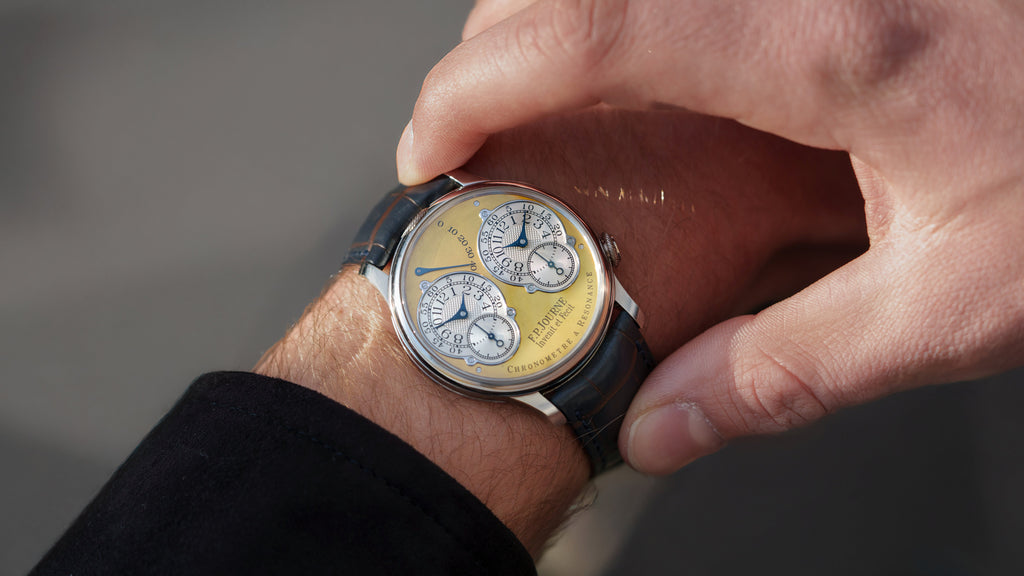
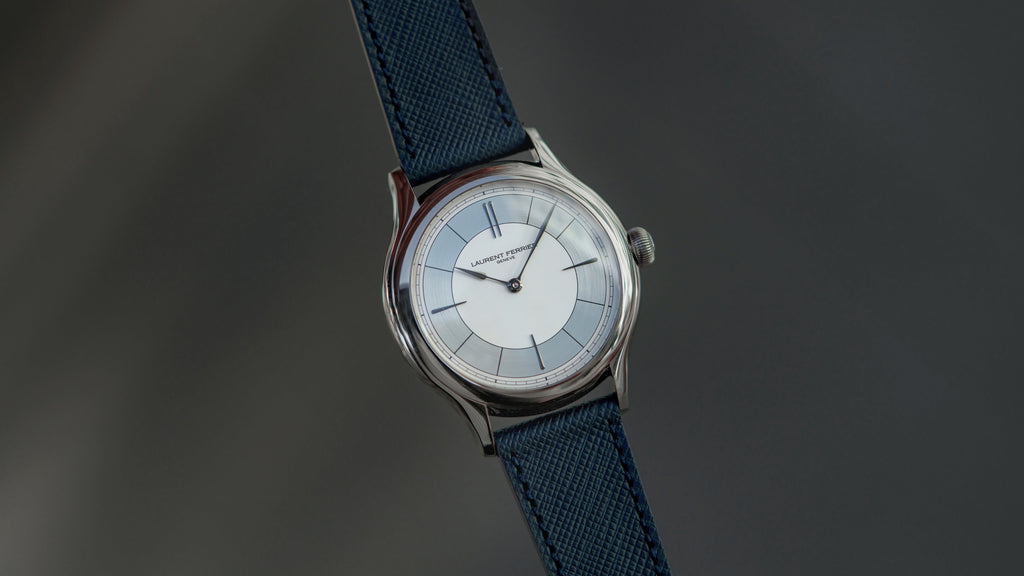

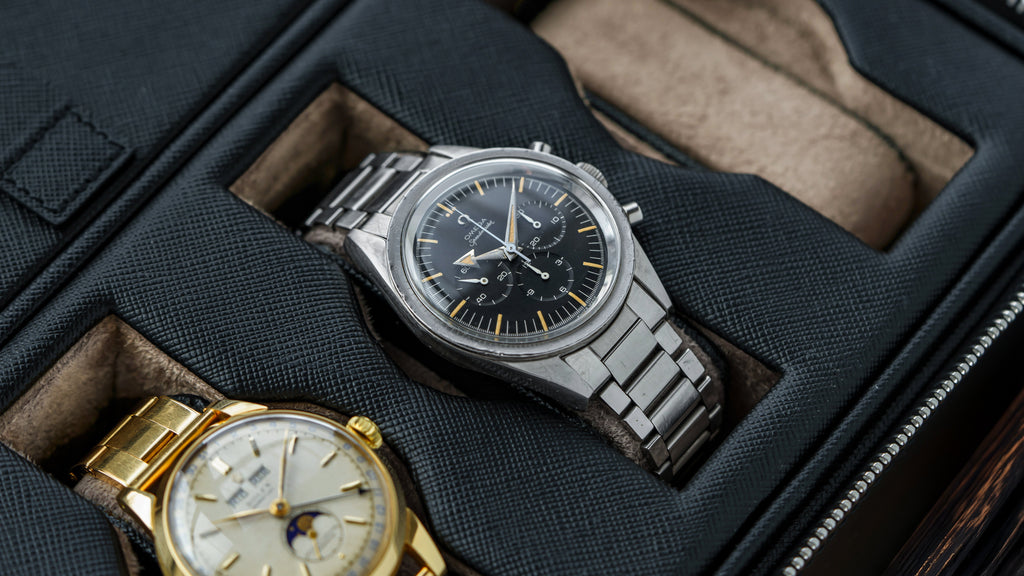
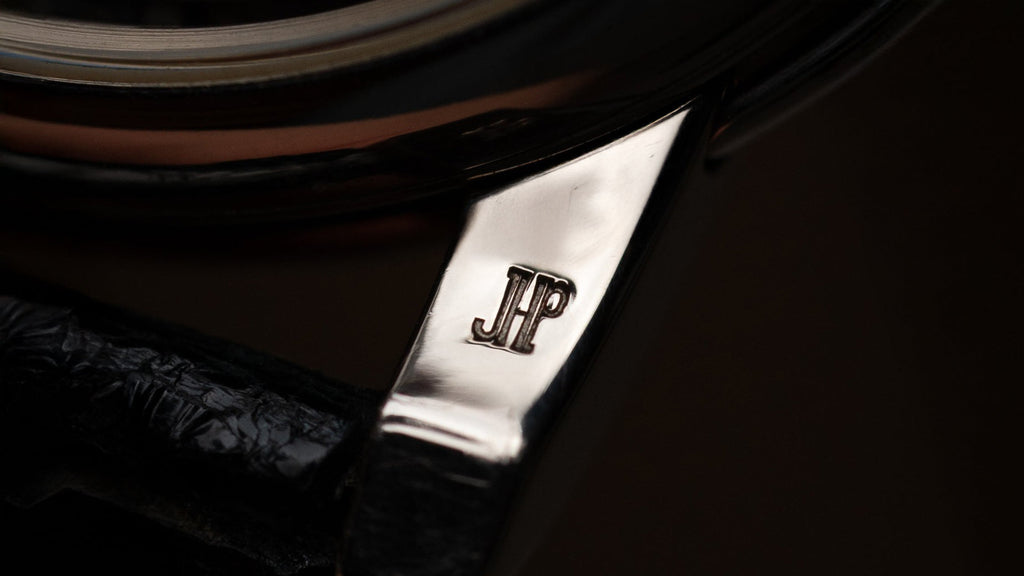
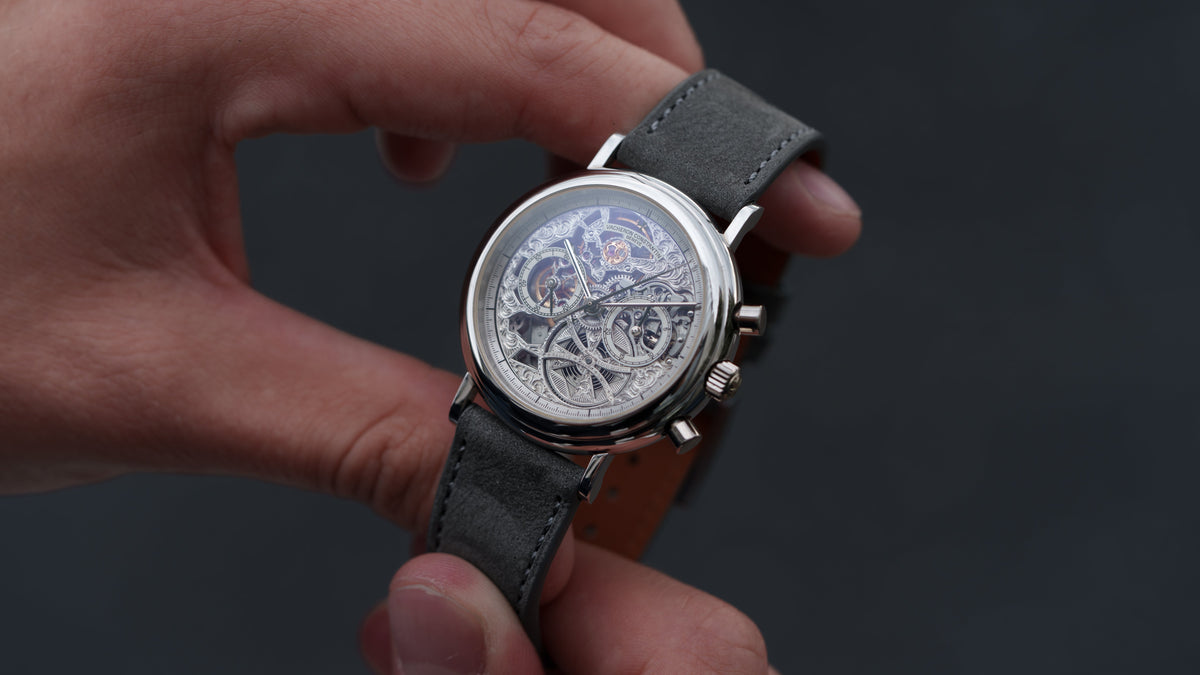
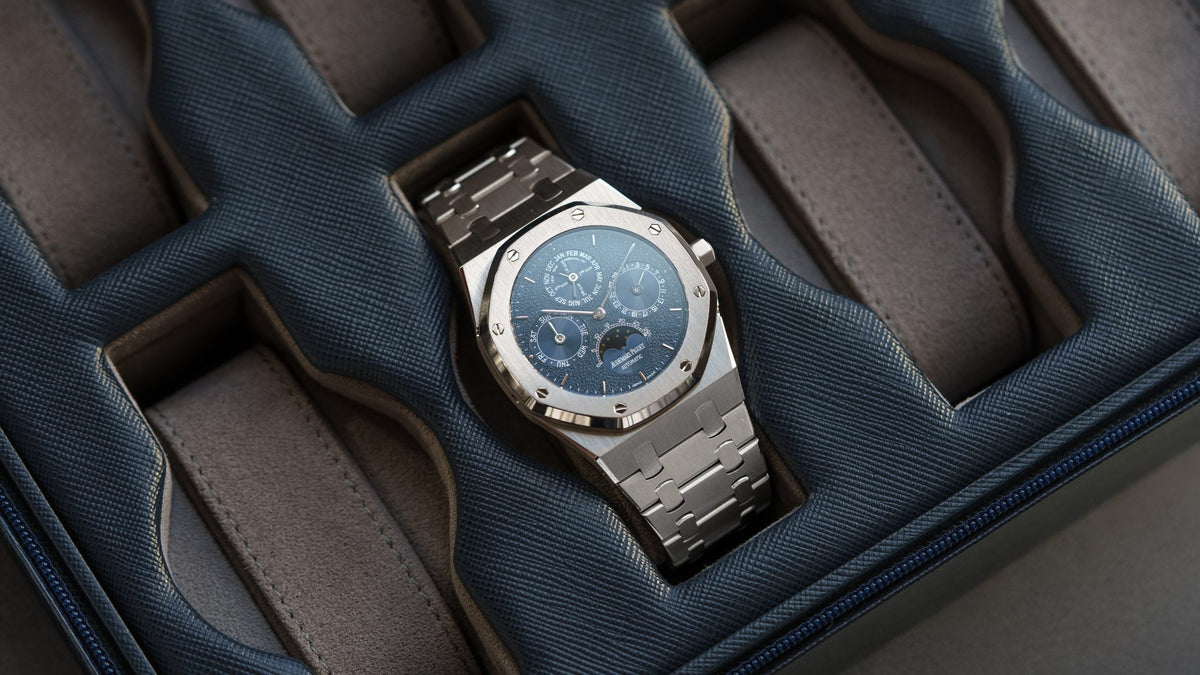
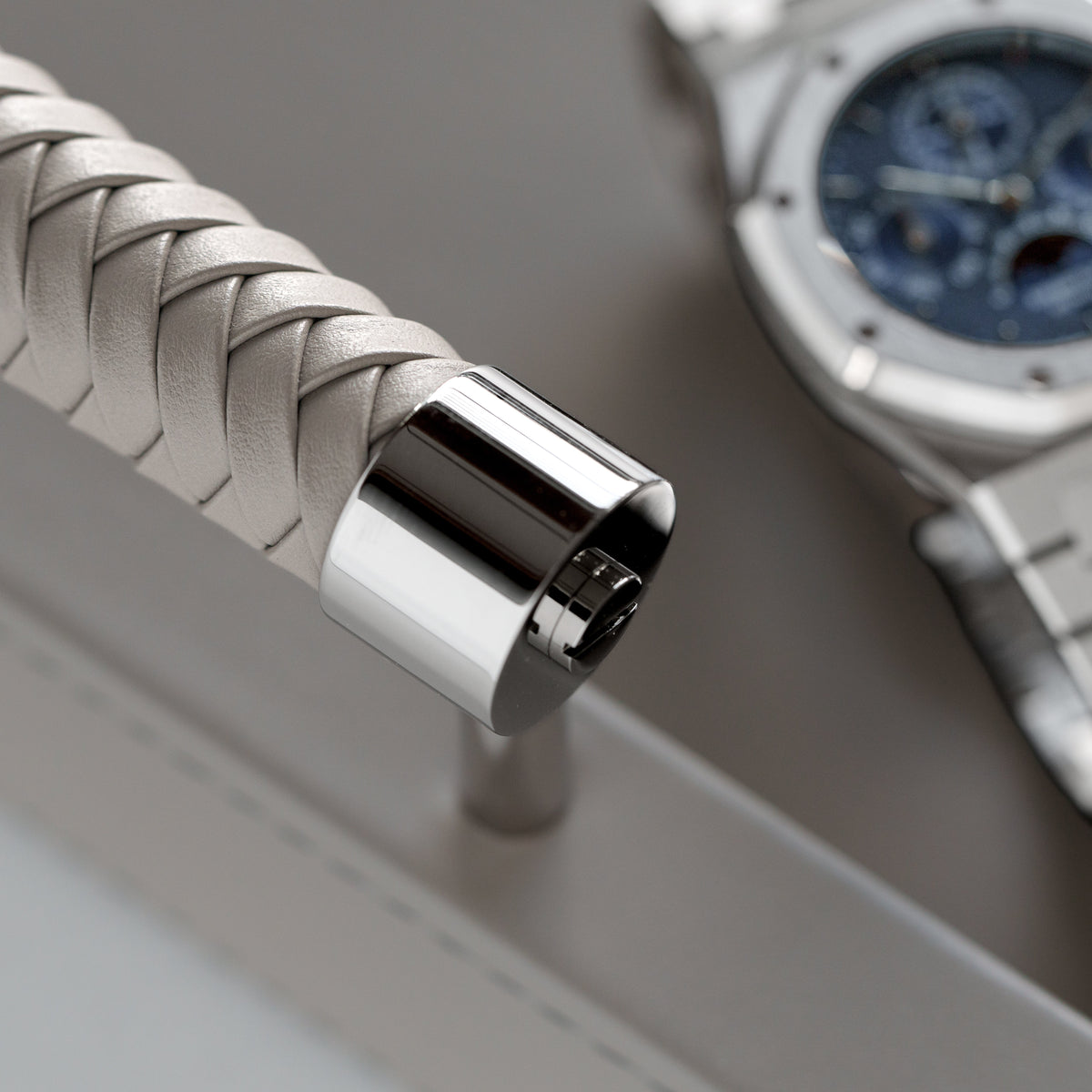
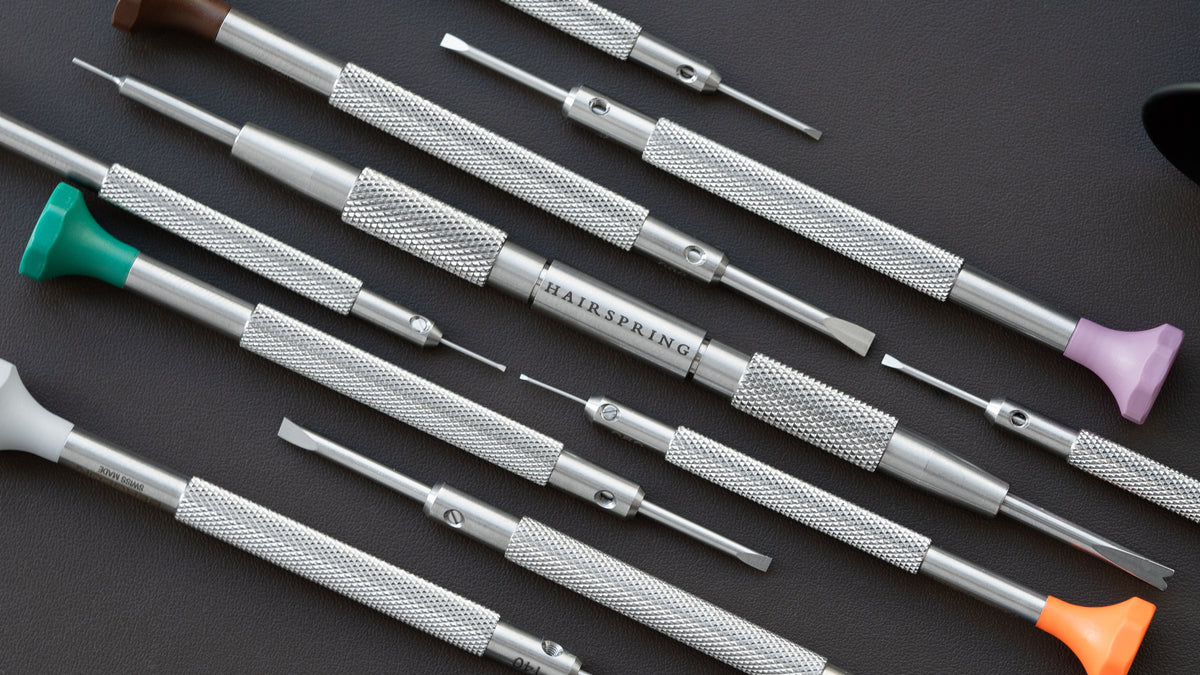
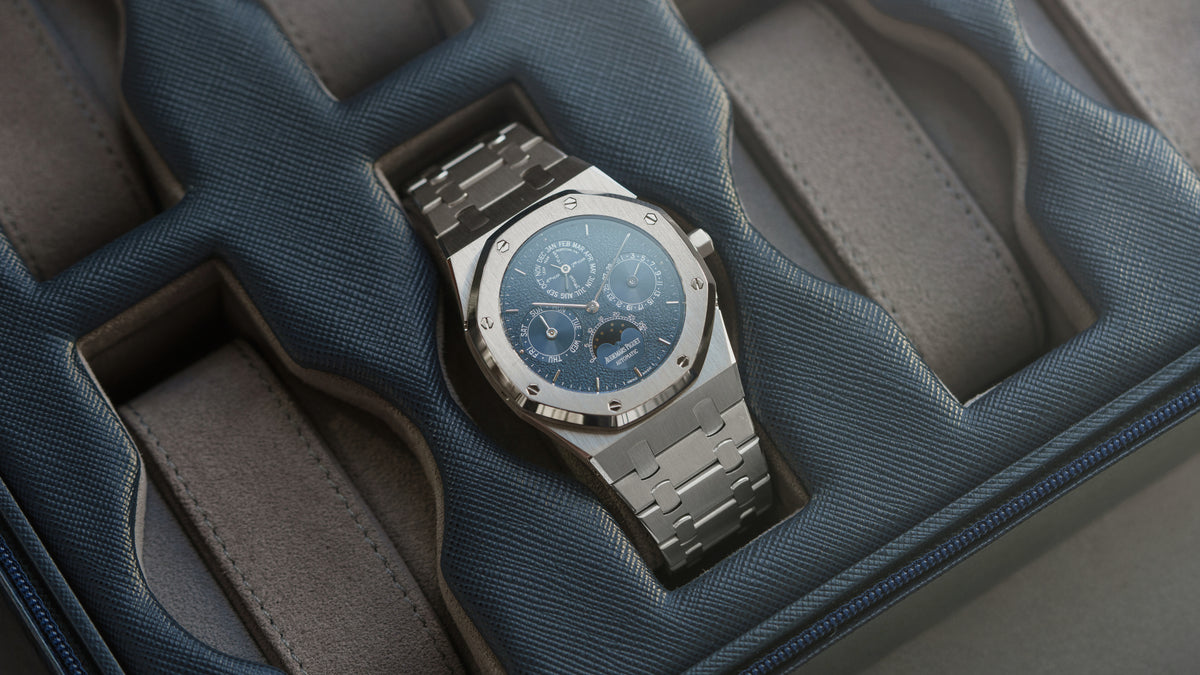
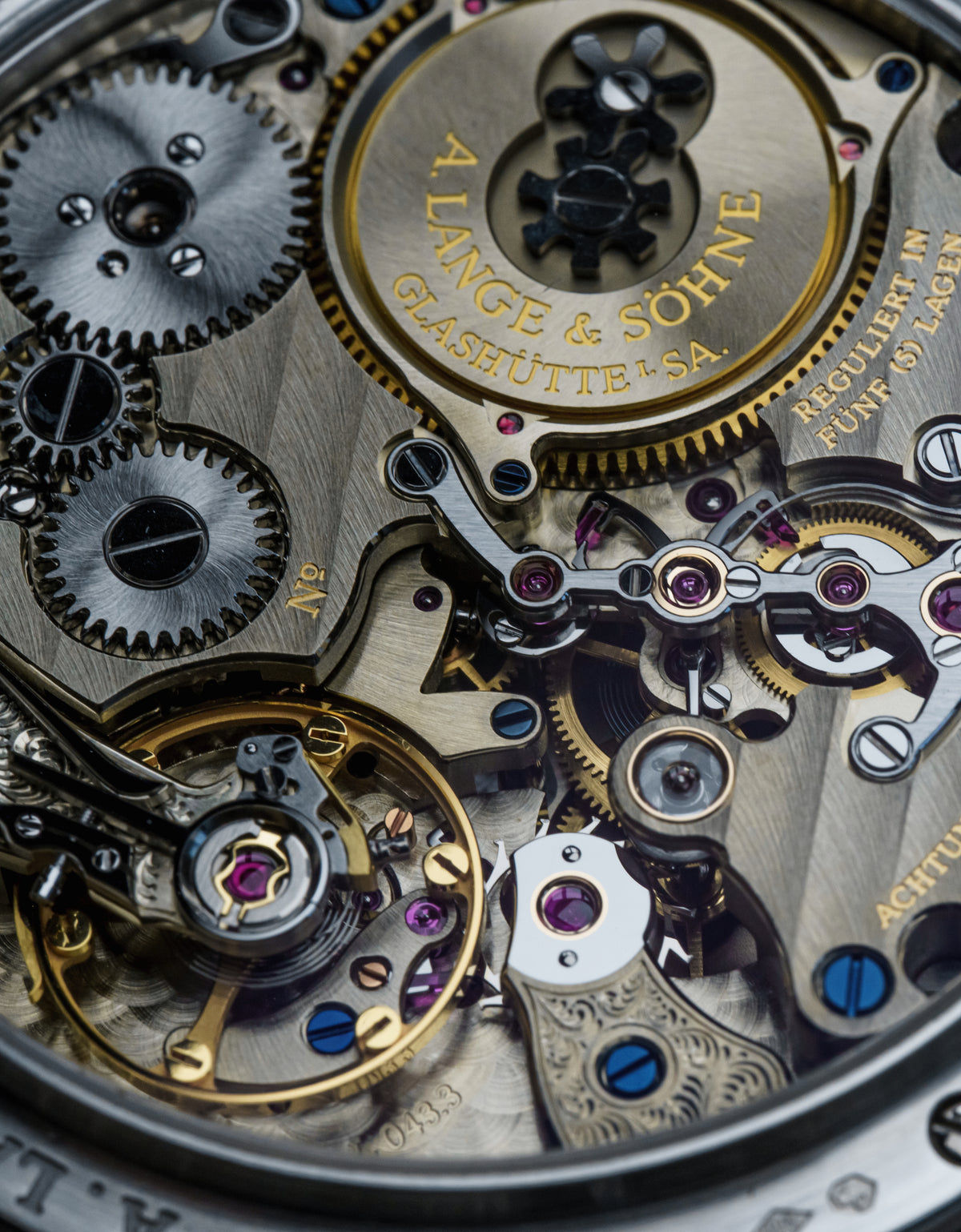

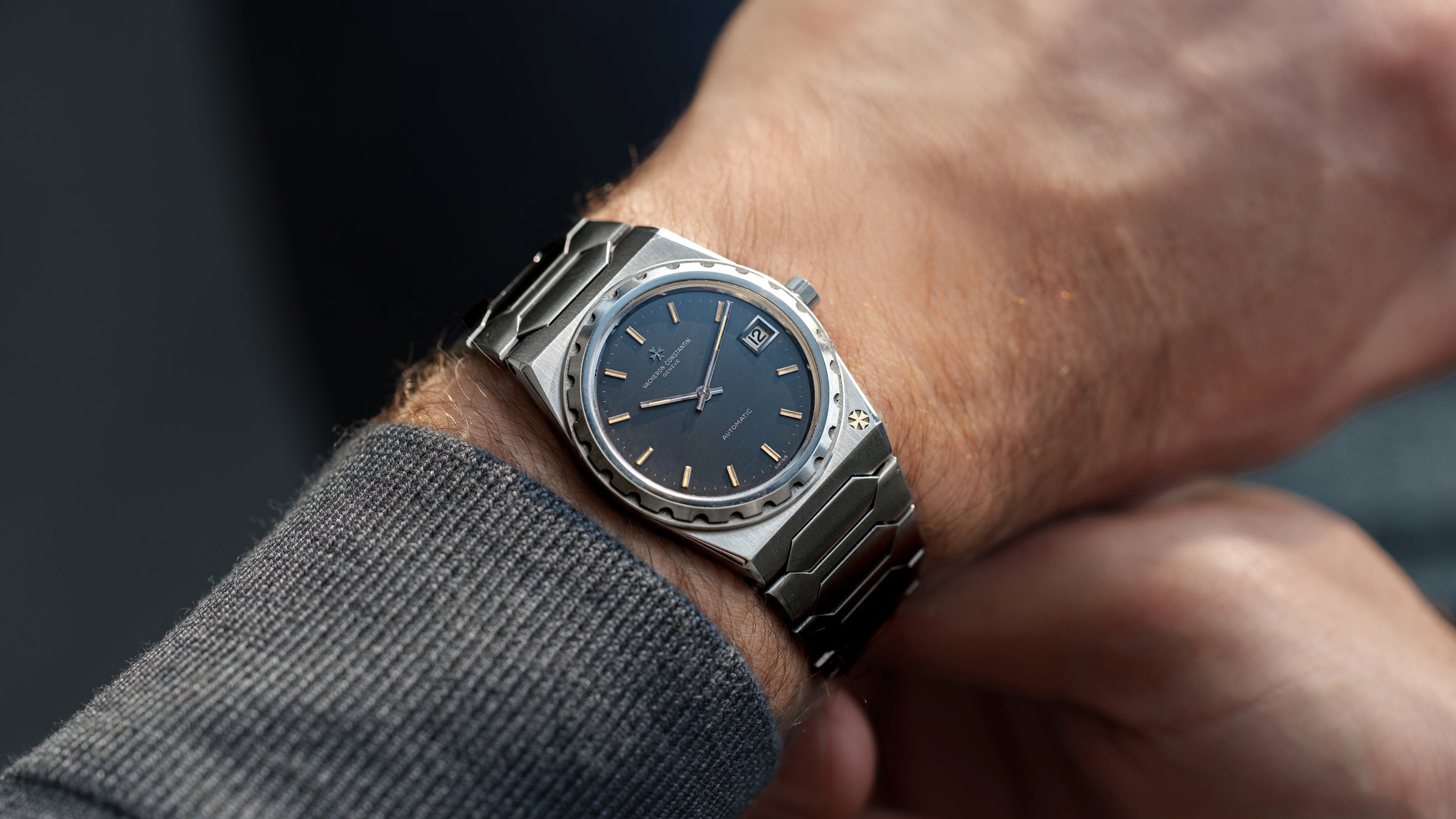
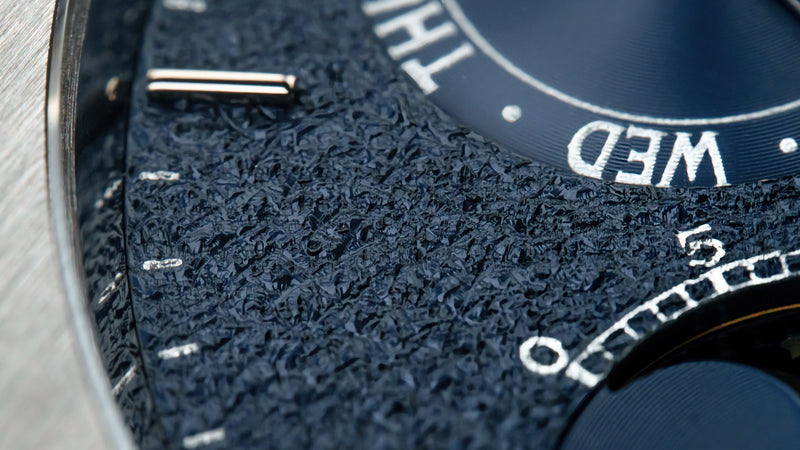

0 comments
Write a Comment